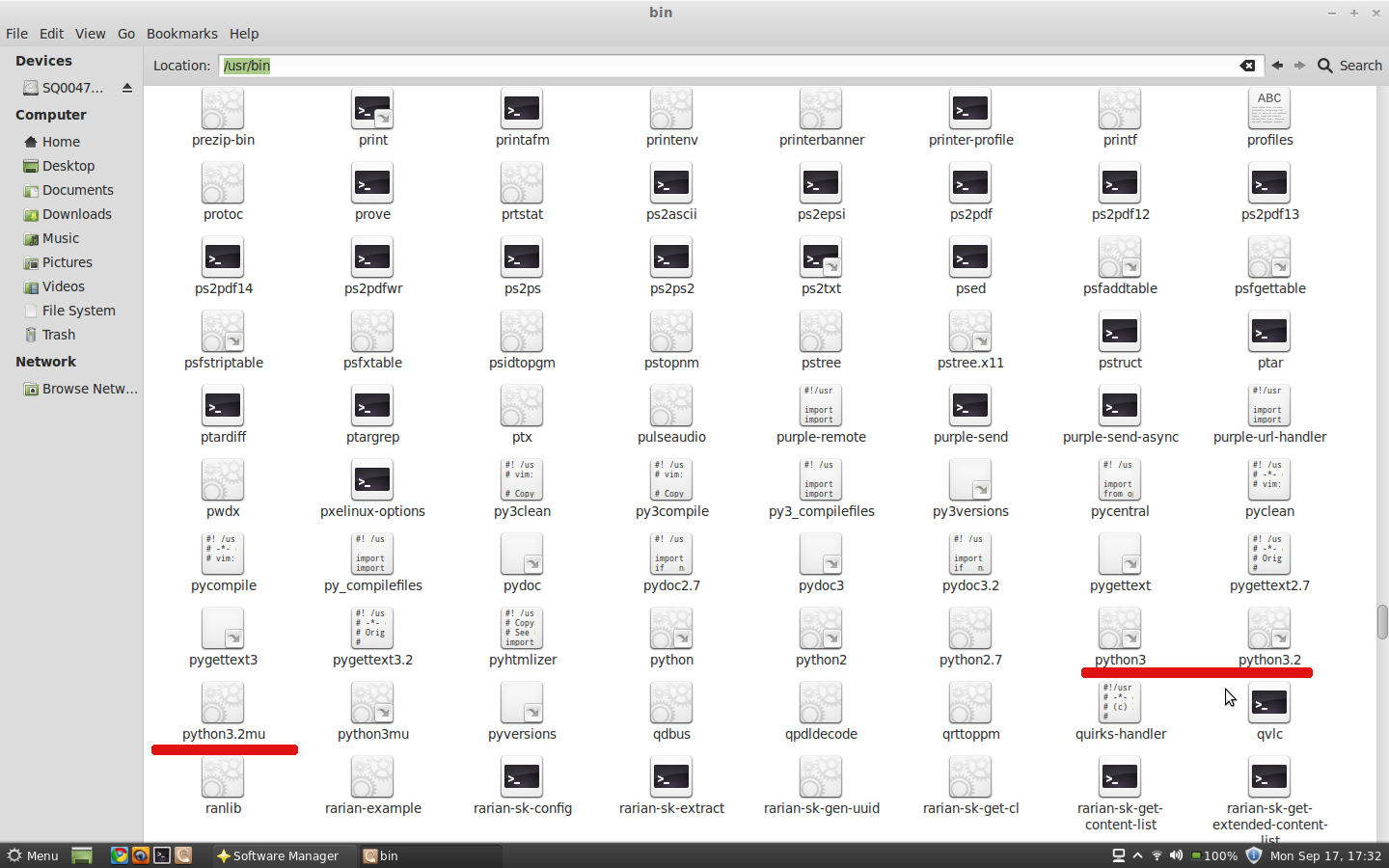I'M trying to find the python3 file that would be the counterpart to the python3.exe in Windows. I want to point Geany to pyton3 rather that 2.7 which it's pointing to now. I don't even know if I found the right directory or not but I've attached a screenshot from /usr/bin, there are 3 python3 files. It's going to take some getting use to in Linux, in Windows this was easy > Program Files > Python > python3.exe. Thanks for any help and advice on how this typically works in Linux
lewashby
56
Junior Poster
Recommended Answers
Jump to PostYou need to show how the files are linked: ls -l /usr/bin
In any case, the files python3 and python3.2 are the executables you need to run. If the raw /usr/bin/python is not linked to one of those, you can change that easily enough.
Jump to PostAnother way is to open up a command line and use the which command.
The which command will tell you the path of an executable.
So if you want to find out which python3 executable is being used you would simply use:which python3. This will output the path to the …
All 5 Replies
rubberman
1,355
Nearly a Posting Virtuoso
Featured Poster
JasonHippy
739
Practically a Master Poster
lewashby
56
Junior Poster
JasonHippy
739
Practically a Master Poster
lewashby
56
Junior Poster
Be a part of the DaniWeb community
We're a friendly, industry-focused community of developers, IT pros, digital marketers, and technology enthusiasts meeting, networking, learning, and sharing knowledge.
